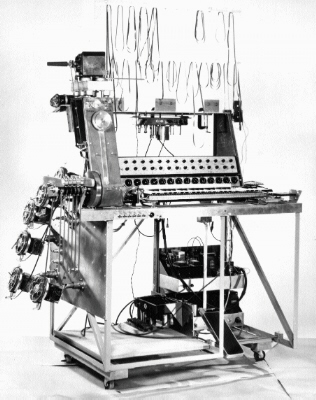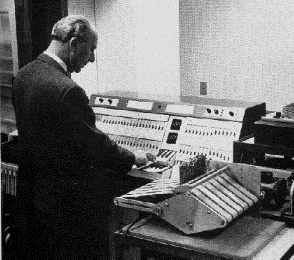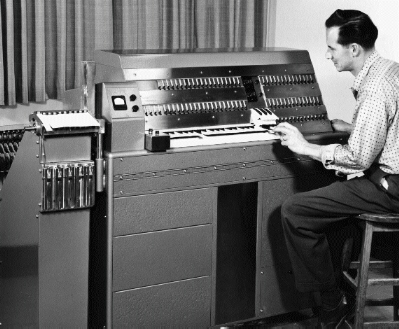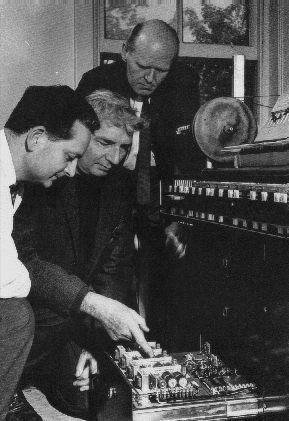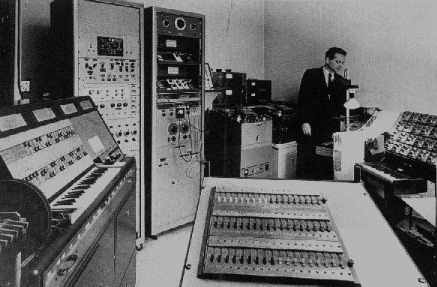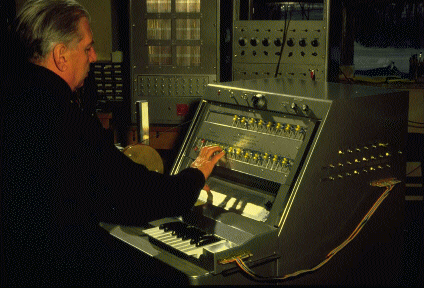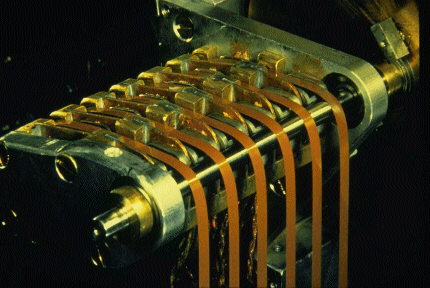 |
|
Special Purpose Tape Recorder (1955-1967) Hugh Le Caine had heard radio broadcasts of tape music since the early 1950's and he had worked extensively with tape reverberation, feedback and multi-track recording. After the NRC programme in electronic music began, the focus of his instruments shifted from performance to composition.
He began to work on a device which he called the "Multi-track" to alter the playback speed of recorded sound, which would facilitate the use of recorded sound as a compositional material. By 1955, the first prototype of this new instrument was able to play six tapes simultaneously, changing the playback speed of each tape independently and recombining the resulting sound into a single recording. The tapes were played on a single capstan at the left of the instrument while the speeds were controlled by a three-octave keyboard on the right.
Volume was controlled
in six groups by six touch sensitive keys. Later, with the assistance
of Gordon Ellis and Horace Aubrey, the instrument was expanded to
play ten stereo tapes and produce a stereo output. The instrument
was actually more of a multiple tape player than a tape recorder
though it was formally called the "Special Purpose Tape Recorder."
Below:
The 1955 Prototype Le Caine expanded a multi-track tape recorder he had built in his home studio, and in 1955 installed a variable speed control for the playback mechanism. That fall he composed his landmark "Dripsody" using the new multi-track Special Purpose Tape Recorder.
The central instrument in the studio at the University of Toronto was the Special Purpose Tape Recorder. When the studio opened in 1959, it was the first in Canada and the second in North America. Myron Shaeffer, the studio director, designed and built the Hamograph to control the Special Purpose Tape Recorder.
After the Edward Johnson Building was opened at the University of Toronto, the new electronic music studio in the basement was equipped with two work areas. A second and greatly refined Special Purpose Tape Recorder, (here demonstrated by Gordon Ellis, Le Caine's assistant at the National Research Council) was installed in the second work area.
|
Photographs courtesy of the Music Division of the National Library of Canada.
Website questions to: info@b2bweb.ca
